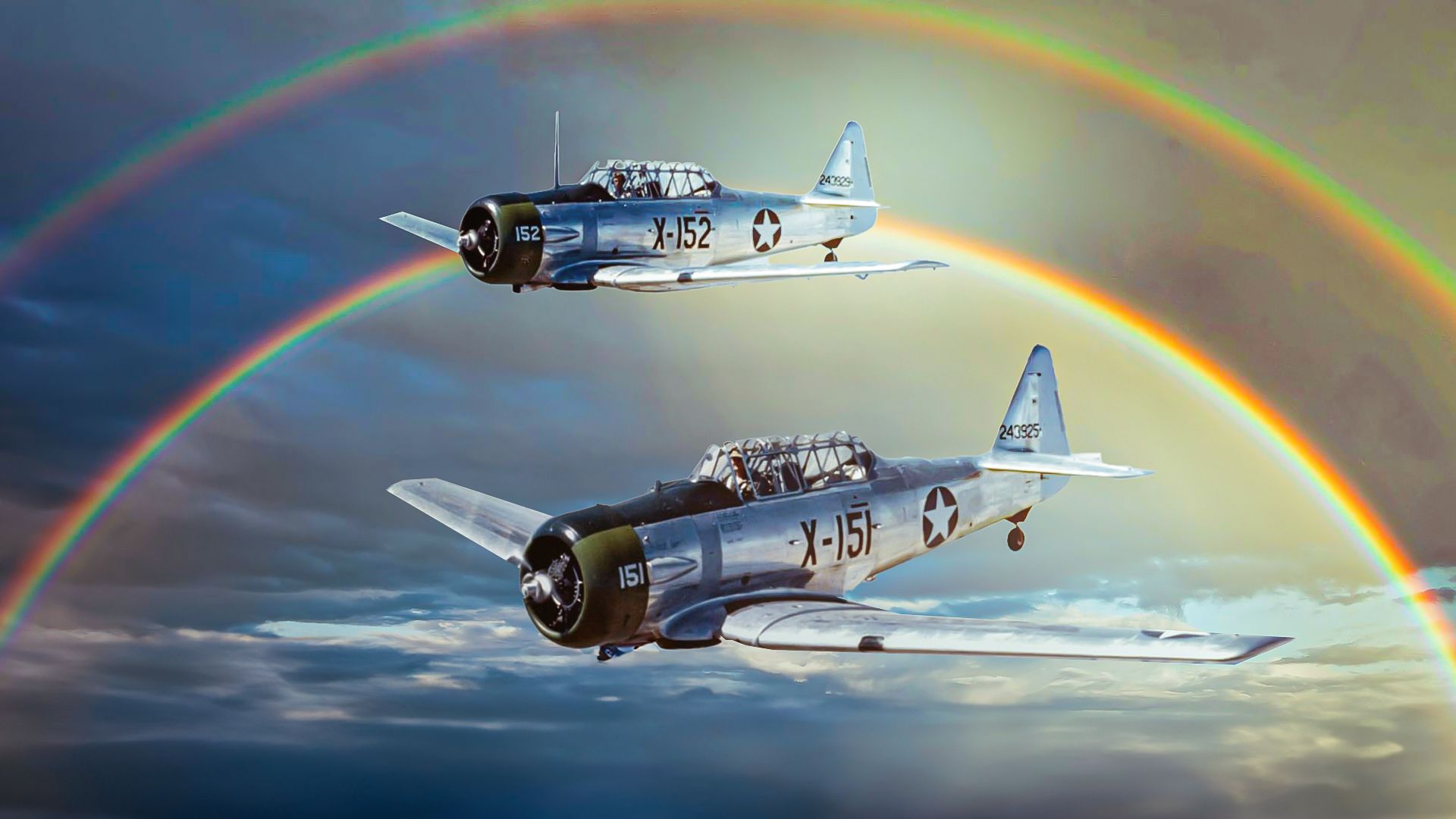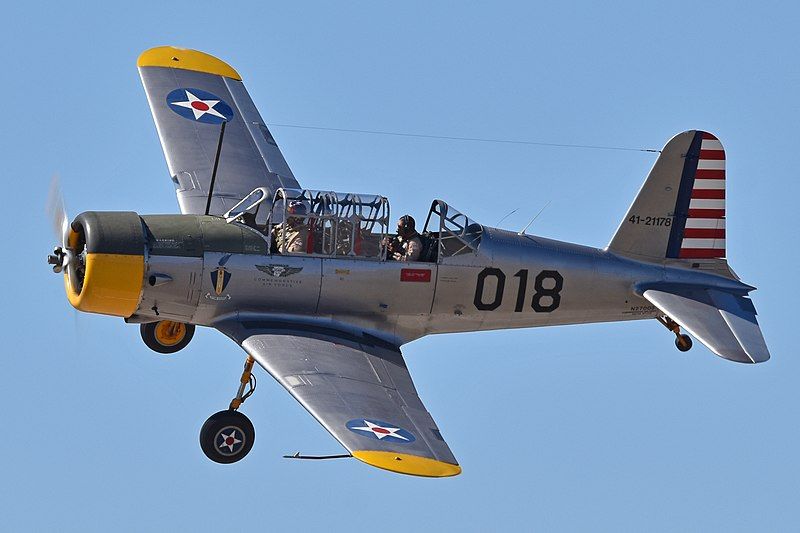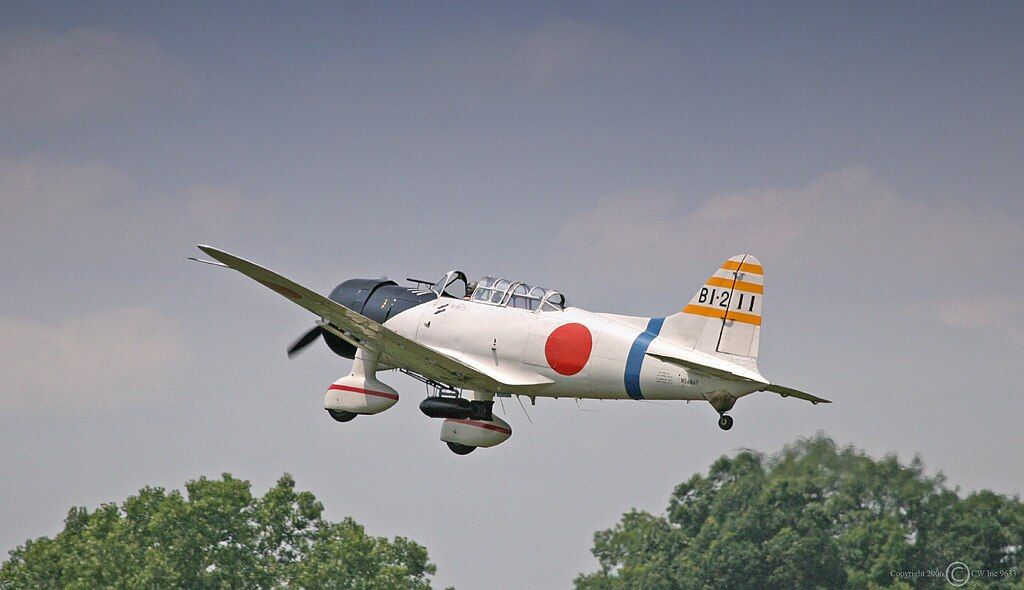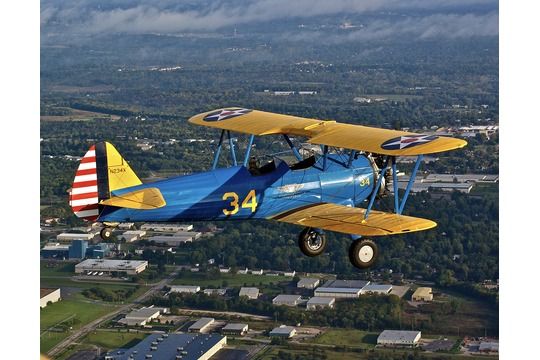Summary
- The North American T-6 Texan was the best US fighter training aircraft of WWII, with a second career as a movie star.
- The Vultee BT-13 Valiant was a basic trainer for fighter pilots in WWII, known for its power and weight.
- The Cessna UC-78 Bamboo Bomber and Beechcraft AT-11 Kansan were used for multi-engine training in WWII.
As those of you dear readers who are my fellow fans of the late great Richard “Demo Dick” Marcinko (CDR, USN [Ret.]; November 21, 1940 – December 25, 2021), founding CO of US Navy SEAL Team 6 and Red Cell and author of the bestselling Rogue Warrior® series of books (an autobiography, followed by a series of novels, as well as three non-fiction leadership guides), he codified his leadership philosophies in his 10 Commandments of SpecWar (Special Warfare), one of which reads, in part:
Though CDR Marcinko served in the Vietnam War as opposed to WWII and though he certainly wasn’t an aviator, combat aviation trainers and instructors for the US Army Air Forces (USAAF), US Navy (USN), and US Marine Corps (USMC) embodied Demo Dick’s philosophy during the Second World War. They ensured that through the sweat of training, America’s fighter and bomber crews inflicted far more bleeding upon the Axis foes than they incurred in return. Simple Flying now looks at the Top 5 American training aircraft of WWII.
1
North American T-6 Texan (AKA AT-6/SNJ/Harvard)
This plane eventually found a second career as a TV and movie star
We’ll start with the most famous example of the bunch.
Making its maiden flight on April Fool’s Day 1935 and manufactured by North American Aviation (the now defunct company that also produced the legendary P-51 Mustang fighter and B-25 Mitchell bomber), this training plane was used for advanced training for fighter pilots and was given three different official designations:
- AT-6 (by the USAAF)
- SNJ (by the USN)
- Harvard (by British Commonwealth air forces)
The National Museum of the United States Air Force notes that US military flight training during WWII was divided into primary, basic, and advanced phases. At the beginning of the war, each phase lasted three months. However, as the war effort kicked into high gear, each phase was reduced to ten weeks and then to nine weeks.
The Texan had a max airspeed of 208 mph (335 km/h, 181 kn), a cruise speed of 145 mph (233 km/h, 126 kn), and an armament provision for up to three .30 caliber machine guns. According to the Fantasy of Flight Museum in Polk, Florida:
“[I]t trained most of the Allied fighter pilots of World War II and went on to become arguably the best fighter training aircraft of all time.”
In all, 15,495 T-6 airframes were produced. After the war ended, a substantial number avoided consignment to the scrapyard. Many of those survivors found a second career as movie and TV stars. They were often used as mock-ups for Imperial Japanese Navy (IJN) Mitsubishi A6M Zero fighter planes and Nakajima B5N “Kate” torpedo bombers in WWII feature films such as Tora! Tora! Tora! (1970), The Final Countdown (1980), and Pearl Harbor (2001), as well as television series such as Baa Baa Black Sheep AKA Black Sheep Squadron (1976-1978).
The Texan also served as the inspiration for the moniker of a current USAF Pilot and US Naval Aviator training plane, the Beechcraft (Textron Aviation)/Raytheon T-6 Texan II:
2
The Vultee BT-13 Valiant (AKA “Vultee Vibrator”)
(Please don’t read any innuendo into that nickname!)
Working our way in reverse sequence from advanced training for aspiring fighter pilots, the Vultee Vibrator was the basic trainer for fighter jocks. As noted by the National WASP WWII Museum in Sweetwater, Texas:
“The BT-13 was heavier and had twice the horsepower of the primary trainers. It required the student pilot to use two-way radio communications, landing flaps, and a two-position Hamilton Standard propeller.”
- “Heavier” as in an empty weight of 3,375 lb (1,531 kg) and a gross weight of 4,496 lb (2,039 kg)
- “Twice the horsepower” as in a Pratt & Whitney R-985-AN-1 nine-cylinder air-cooled radial engine, 450 hp (340 kW)
The Valiant was manufactured by Vultee Aircraft, Inc. (which later became Convair, famous for its warbirds such as the Cold War era B-36 Peacemaker behemoth bomber), headquartered in Downey, California. The plane made its maiden flight in March 1939 and was officially introduced into service in June 1940. The “Vibrator” had a max airspeed of 180 mph (290 km/h, 160 kn).
A total of 9,525 BT-13s were built. A substantial number of Valiants still survive in airworthy condition. As with the T-6 Texan, the “Vibrator” also attained some cinematic stardom, as it was used to portray the IJN Aichi D3A “Val” dive bomber in the aforementioned Tora! Tora! Tora!
3
Boeing Stearman PT-17 (USN designation NS and N2S) “Kaydet”
Yes, biplanes were still used for flight training in WWII
Continuing to work our way backward, we now have reached the primary trainer for America’s then-raw military aviation recruits. How apropos to use a “Kaydet” to train “cadets,” eh?
According to the National Naval Aviation Museum in Pensacola, Florida:
“One of the most-produced biplanes in history, the N2S served as the nation’s foremost primary trainer during World War II. Though nicknamed the Kaydet, the airplane was more commonly called the Stearman after its manufacturer, and was much beloved by military and, later, civilian aviators. Former President George H.W. Bush made two flights in this particular aircraft during his World War II flight training at Naval Air Station (NAS) Minneapolis, Minnesota…The N2S was perhaps the most-produced biplane ever with 10,346 examples rolling off the production line between 1934 and 1945. Though the company christened the trainer with the name ‘Kaydet,’ those who flew and maintained it universally called it the Stearman.”
“Initially designed as an Army Air Corps trainer, the Stearman served extensively in the Navy. In the late-1930s the sea service accepted the first of 4,318 of them. By World War II, both Army and Navy operated standardized versions of the aircraft with interchangeable parts, unique in an era when joint operation [sic] were far from standard.”
The Stearman had a max airspeed of 124 mph (200 km/h, 108 kn)
Just like with the previous two training birds listed in this article, many airworthy and static display Kaydets survive today. One of the airworthy specimens is owned by the Heart of America Wing of Commemorative Air Force (CAF).
4
Cessna UC-78 “Bamboo Bomber” (AKA AT-17 “Bobcat” or “Cessna Crane”)
Advanced trainer for bomber and transport pilots
Moving on from single-engine fighter trainers for now; what about advanced training for American military flyboys going on the twin-engine bomber and transport routes? That’s where the “Bamboo Bomber” (based on the commercial variant, the Model T-50) came into play.
According to the National WASP WWII Museum:
“Originally built as the civilian Cessna Model T-50 beginning in 1939, the twin-engine plane was adopted for use by the Army Air Forces as the AT-17 and UC-78 for multi-engine training of pilots expected to become transport or bomber pilots in World War II. It is constructed from “non-strategic” materials consisting of fabric covered tubular steel fuselage and wood wings. Because of its wood construction it was jokingly referred to by pilots as the ‘Bamboo Bomber.’ It contained no bamboo and was never a bomber.”
“The Cessna UC-78 Bobcat was used by the WASP for multi-engine training. There were as many as forty of the twin-engine trainers at Avenger Field during the summer of 1943. There are only 5 air worthy [sic] UC-78s in the world.”
Besides the airworthy specimens, there are also six static display Bobcats that survive today. Among them are:
The “Bamboo Bomber” had a max airspeed of 195 mph (314 km/h, 169 kn) and a max takeoff weight of 6,062 lb (2,750 kg).
5
Beechcraft AT-11 Kansan (AKA Model 18 “Twin Beech”)
Trainer for navigators and bombardiers
That covers the pilots, but what about those less-heralded but still oh-so-vital aircrew members of the American war effort in WWII, i.e., the navigators and bombardiers?
That’s where the AT-11 Kansan came into play. The Kansan made its maiden flight on January 15, 1937.
As the National Museum of the United States Air Force reports:
“The AT-11 was the standard U.S. Army Air Forces World War II bombing trainer; about 90 percent of the more than 45,000 USAAF bombardiers trained in AT-11s. Like the C-45 transport and the AT-7 navigation trainer, the Kansan was a military version of the Beechcraft Model 18 commercial transport. Modifications included a transparent nose, a bomb bay, internal bomb racks and provisions for flexible guns for gunnery training.”
Two .30 caliber (7.62 mm) were used for the gunnery training.
“Student bombardiers normally dropped 100-pound sand-filled practice bombs. In 1943 the USAAF established a minimum proficiency standard of 22 percent hits on target for trainees. Typical combat training missions took continuous evasive action within a 10-mile radius of the target with straight and level final target approaches that lasted no longer than 60 seconds. After Sept. 30, 1943, the AT-11 usually carried a Norden Bombsight and a C-1 automatic pilot, which allowed the bombardier student to guide the aircraft during the bombing run.”
The AT-11 had a max airspeed of 215 mph (346 km/h, 186.8 kn). Out of 1,500 AT-11s built for the USAAF, nine survive today, at least two of which are still airworthy (going by the YouTube videos I was able to dig up):
.




